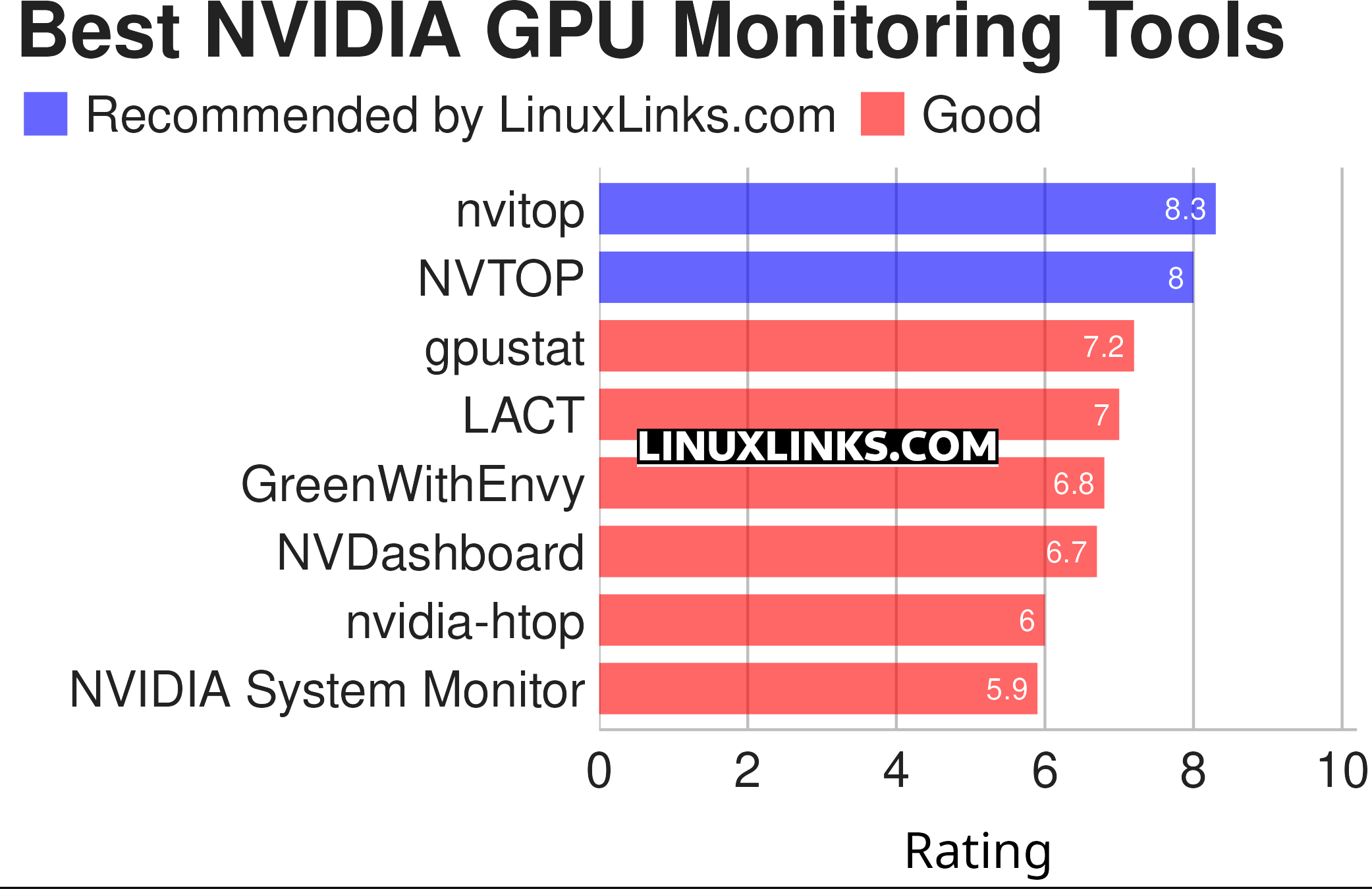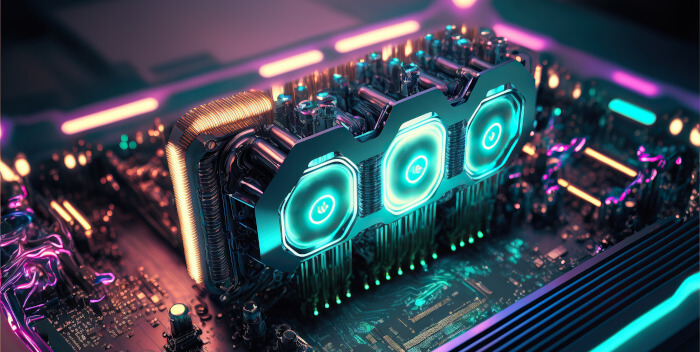nvidia-smi (also known as NVSMI) provides monitoring and management capabilities for each of NVIDIA’s Tesla, Quadro and GRID devices from Fermi and higher architecture families. Very limited information is also provided for GeForce devices. It’s based on top of the NVIDIA Management Library (NVML), which helps users manage and monitor NVIDIA GPU devices.
NVSMI is a cross platform tool that supports all standard NVIDIA driver-supported Linux distros.
The command line utility tool is installed with the NVIDIA drivers and is probably the monitoring tool that most users are familiar with. We can perform live monitoring using watch and nvidia-smi together e.g.
$ watch -n0.1 nvidia-smi
nvidia-smi is quite basic. This article explores other useful NVIDIA GPU monitoring tools.
Here’s our verdict captured in a legendary LinuxLinks-style ratings chart. All the software is free and open source.

Let’s explore the tools at hand. For each application we have compiled its own portal page, a full description with an in-depth analysis of its features, a screenshot of the program in action, together with links to relevant resources.
| NVIDIA GPU Monitoring Tools | |
|---|---|
| nvitop | Bills itself as “the one-stop solution for GPU process management” |
| NVTOP | (h)top like task monitor for AMD, Intel and NVIDIA GPUs |
| gpustat | Query and monitor GPU status |
| LACT | Configures and monitors AMD, NVIDIA and Intel GPUs |
| GreenWithEnvy | GUI System tool |
| NVDashboard | JupyterLab extension for displaying dashboards of GPU usage |
| nvidia-htop | Enriches the output of nvidia-smi |
| NVIDIA System Monitor | Task manager monitoring your GPU |
This article has been revamped in line with our recent announcement.
 Read our complete collection of recommended free and open source software. Our curated compilation covers all categories of software. Read our complete collection of recommended free and open source software. Our curated compilation covers all categories of software. Spotted a useful open source Linux program not covered on our site? Please let us know by completing this form. The software collection forms part of our series of informative articles for Linux enthusiasts. There are hundreds of in-depth reviews, open source alternatives to proprietary software from large corporations like Google, Microsoft, Apple, Adobe, IBM, Cisco, Oracle, and Autodesk. There are also fun things to try, hardware, free programming books and tutorials, and much more. |
